Traditional vs. Contemporary Weaving: A Tapestry of Innovation
Weaving, the art of interlacing threads to create fabric, has been practiced for millennia, evolving from simple utilitarian creations to intricate masterpieces. This rich history encompasses both traditional and contemporary techniques, each offering unique aesthetics and functionalities. This article delves into the distinctions between these approaches and explores the innovative ways modern artisans are pushing the boundaries of weaving, particularly in the realm of Patola, a renowned Indian silk fabric.
Traditional Techniques: A Legacy of Craftsmanship
Traditional weaving techniques, passed down through generations, rely on hand-operated looms and time-honored methods. The emphasis is on precision, patience, and the use of natural materials. Each step, from yarn preparation to intricate pattern design, is carefully executed, resulting in textiles that embody the heritage of the weaver.
Key Characteristics of Traditional Weaving:
- Hand-operated Looms: Traditional looms are simple yet sturdy, requiring manual dexterity and skill.
- Natural Materials: Cotton, silk, wool, and linen are commonly used, reflecting the resources available in specific regions.
- Intricate Patterns: Designs are often geometric, floral, or inspired by nature, reflecting cultural motifs and traditions.
- Slow and Labor-Intensive: The meticulous process demands time and effort, making traditional fabrics highly valued.
Contemporary Techniques: Embracing Innovation and Experimentation
Contemporary weaving embraces modern technologies and artistic expressions, pushing the boundaries of what's possible with this ancient craft. While respecting tradition, it incorporates new materials, designs, and methods, creating a tapestry of innovation.
Key Characteristics of Contemporary Weaving:
- Power Looms: Modern, mechanized looms enhance productivity and allow for complex patterns.
- Synthetic Materials: Contemporary weavers experiment with acrylics, polyester, and other synthetic fibers, expanding the range of textures and colors.
- Abstract and Conceptual Designs: Contemporary weaving often explores abstract patterns, geometric forms, and bold color combinations.
- Multidisciplinary Approaches: Contemporary weavers integrate elements of sculpture, textile design, and other artistic disciplines.
Innovations in Patola Weaving
Patola, a double ikat silk fabric from Gujarat, India, is renowned for its intricate, multi-colored patterns. Traditionally, the intricate designs were created using a labor-intensive process of resist dyeing, where threads were tied and dyed before weaving.
Modern Innovations in Patola Weaving:
- Digital Design and Jacquard Looms: The use of digital design software allows for more intricate and complex patterns, while jacquard looms automate the weaving process, enhancing speed and efficiency.
- New Color Combinations: Modern artisans experiment with new color palettes and dye techniques, creating vibrant and contemporary Patola designs.
- Sustainable Practices: Some weavers are adopting sustainable practices, using natural dyes and minimizing waste.
- Collaboration with Designers: Contemporary Patola weavers collaborate with fashion designers, architects, and artists, resulting in innovative and artistic creations.
Technological Advancements Aiding Patola Weaving
Technological advancements have played a significant role in modernizing Patola weaving, allowing artisans to create intricate designs with greater precision and efficiency.
Key Technological Advancements:
- Computer-Aided Design (CAD): CAD software enables weavers to design complex patterns with precision and accuracy.
- Jacquard Looms: Jacquard looms use punched cards or digital programming to automatically weave intricate designs, eliminating the need for manual manipulation of threads.
- Digital Printing: Digital printing techniques allow for precise and detailed pattern reproduction on fabrics, expanding the possibilities for Patola design.
Conclusion: A Legacy of Craftsmanship, a Future of Innovation
Traditional and contemporary weaving approaches represent a fascinating dichotomy. While traditional methods emphasize centuries-old craftsmanship, contemporary techniques embrace innovation, experimentation, and technological advancements. In the case of Patola weaving, these innovations have not only enhanced efficiency but have also paved the way for bold new designs and collaborations. As weaving continues to evolve, it remains a testament to human creativity and the enduring power of tradition.

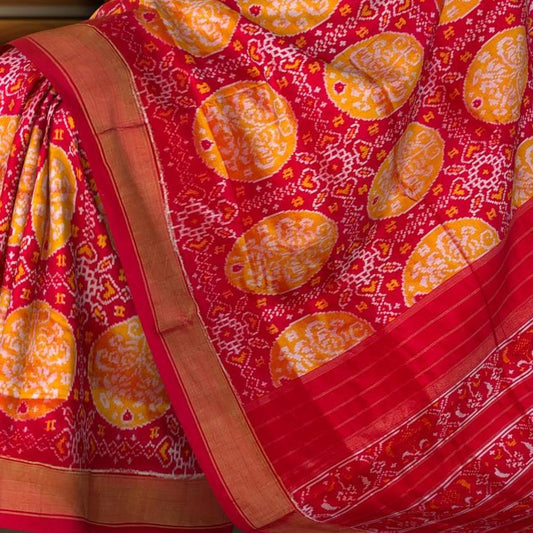
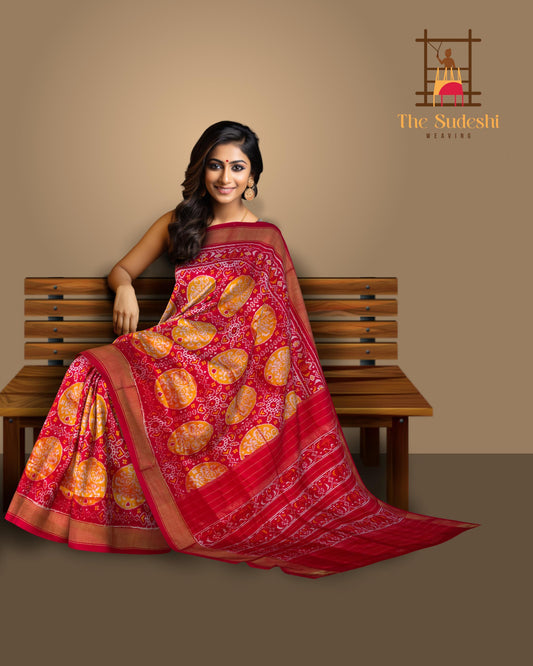
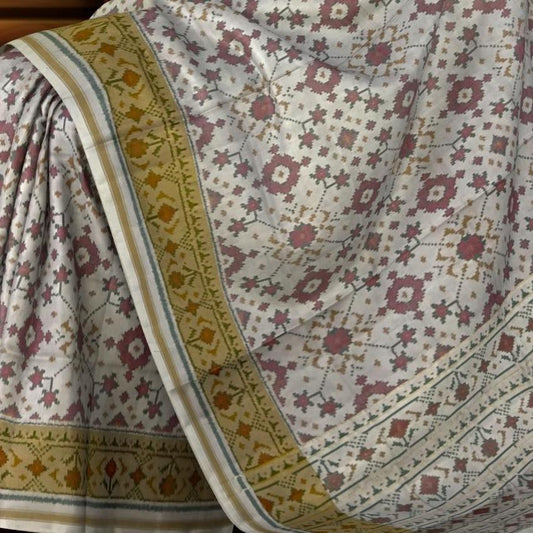
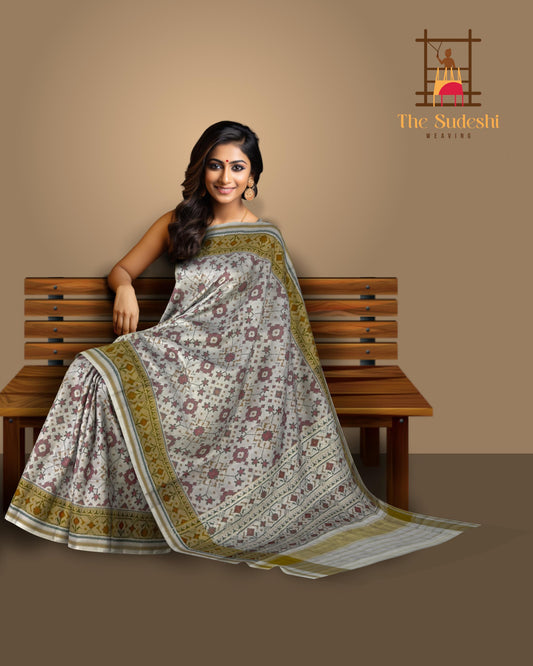
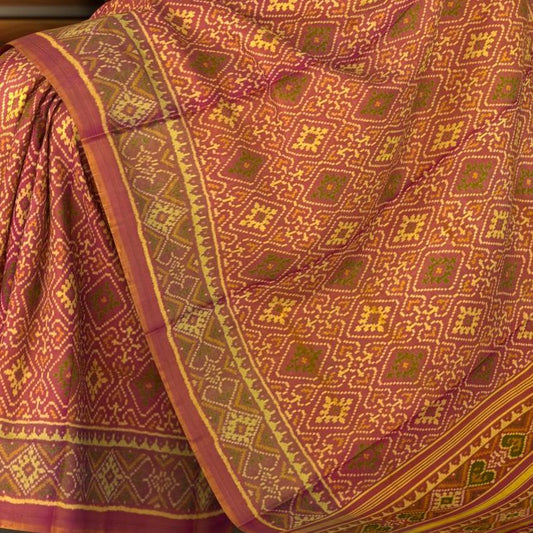
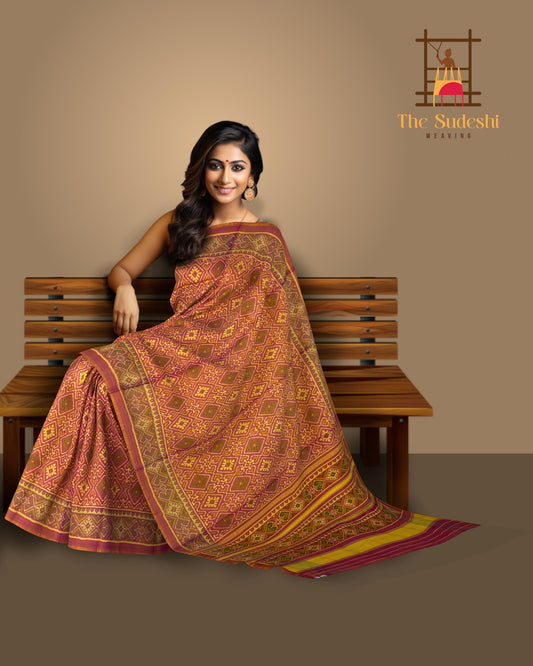
Leave a comment
Please note, comments need to be approved before they are published.